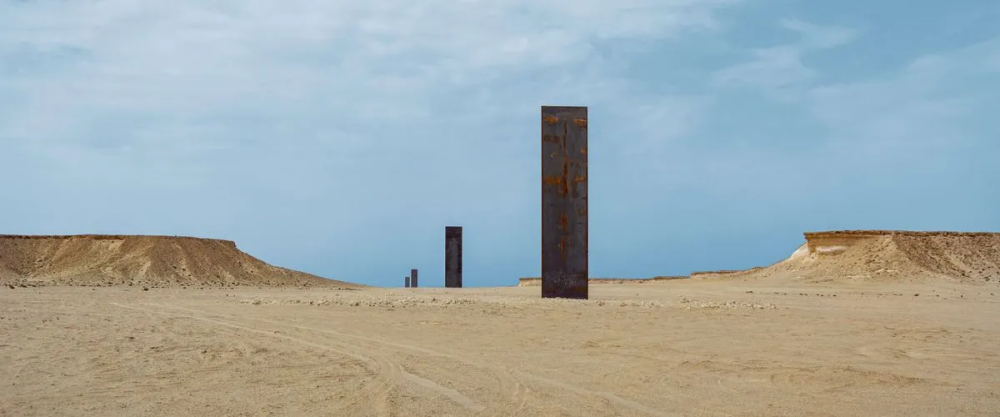

Set within the Brouq nature reserve in Qatar, Richard Serra's East-West/West-East sculpture is a landmark work of art that became an iconic tourism destination since its installation in 2014. Renowned American artist Richard Serra, famous for his massive steel sculptures, crafted this unique piece specifically for the desert landscape of Qatar.
The history behind the East-West/West-East sculpture begins with the Qatar Museums Authority commissioning Serra to create a work that reflects the industrial heritage and the natural beauty of the Qatari desert. Serra responded with a sculpture consisting of four steel plates, each over fourteen meters (approximately 46 feet) tall and spaced out over a kilometer. These steel giants stand undeterred by the elements, parallel to one another, cutting a linear path through the desert.
The design of the sculpture is intended to interact with the vastness of the space, offering an experience of time, space, and scale. It invites viewers to walk the length between the plates, integrating the journey into the desert landscape as part of the artwork itself.
Dukhan has traditionally been known for its oil fields and is an important site in the history of Qatar's oil industry. The region’s tourism industry has evolved significantly, especially since the early 2000s with Qatar's strategic development to diversify its economy through tourism and culture. Prominent investments such as the Museum of Islamic Art and the forthcoming 2022 FIFA World Cup have drawn global attention to the country.
The unveiling of East-West/West-East brought a new kind of cultural tourism to Dukhan and added a must-see destination for art enthusiasts and eco-tourists alike. It is part of a broader initiative by the Qatari government to integrate art and culture into the natural environment.
The latest tourism trends in Dukhan and Qatar point to a blend of cultural experiences, adventure tourism, and eco-tourism. Visitors not only come for the beaches or the oil history but are now drawn by the allure of contemporary art pieces, such as Serra’s sculpture, and the opportunity to explore the natural landscapes of Qatar.
Increasingly, there is a push towards providing immersive cultural experiences beyond the traditional museum setting. The integration of large-scale outdoor artworks like Richard Serra’s is part of this trend. It encourages tourists to explore the region’s natural and industrial heritage while reflecting on the intersection of art with the environment.
With the focus on sustainable tourism and the added visibility from international events, the Dukhan region and, indeed, the whole of Qatar are becoming prime destinations for travelers looking for unique and meaningful experiences.
In recent years, technology has also played a crucial role in enhancing the visitor experience. Apps and digital tours have made remote artworks such as East-West/West-East more accessible, allowing for self-guided tours into the desert and even virtual experiences for those who cannot make the journey in person.
For those planning to visit Richard Serra's East-West/West-East sculpture, it is recommended to prepare for the desert environment. It's best to visit during the cooler months, carry plenty of water, and wear appropriate sun protection. The site is deliberately kept unadorned to not distract from the natural beauty and the power of the sculpture, ensuring an authentic and introspective encounter with Serra's creation and the surrounding desert landscape.